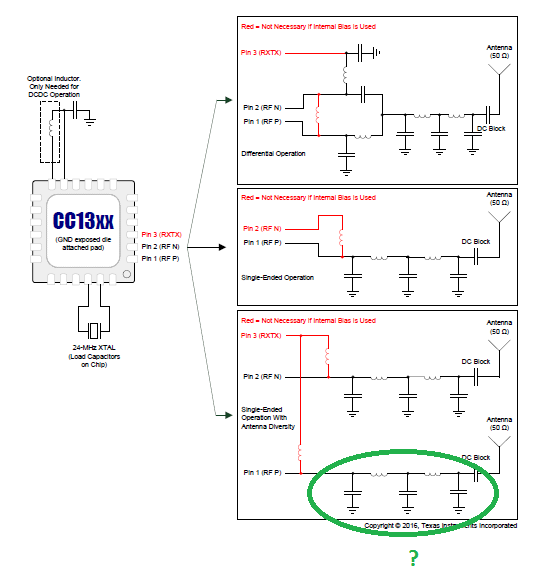I am having a little trouble finding information and/or reference designs based on single-ended operation.
I am looking to create a solution that uses 2 FEMs operating in 434MHz and 900MHz. It appears that a single-ended approach might be a simpler solution than switching the differential signals and having separate baluns and matching networks for each RF path.
I have some questions from the datasheet SWRS181C on page39 (of course with my annotations):
- When the CC1310 is operating in single-ended mode are the RF inputs/outputs internally match to 50 0hms?
- What is the purpose of this LC network in seen in the datasheet, matching, filtering? Is there information on calculating these values for single-ended operation?
- Can you briefly explain (in laymans terms) the purpose of the RXTX pin, it provides a bias to the circuit but how does that improve the receiver sensitivity 1dB as stated in the datasheet?
Any other comment would be welcome.
Thanks,
Gary





